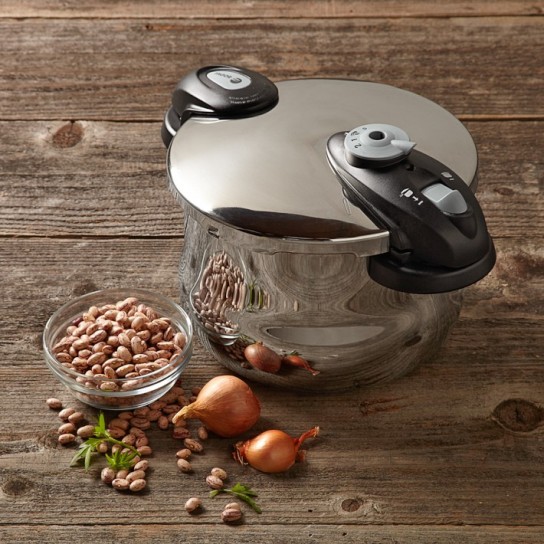It sounds too good to be true: a healthy, hearty, homemade meal in a matter of minutes? But a pressure cooker could be your solution to busy weeknight dinners.
How it works: Pressure cookers form a seal between the main pot and the lid of the machine, which creates pressure. The temperature inside rises rapidly (beyond boiling) so that foods — think beans, whole grains and tougher cuts of meat — cook much faster than they would otherwise.
- Since pressure cooking requires less cooking time and less liquid added to dishes, this method locks in foods’ nutrients that may otherwise be evaporated, resulting in a healthier meal.
- Unlike a slow-cooker, which requires some planning and early prep on the part of the cook, a pressure cooker can be pulled out and used at a moment’s notice.
- Reduced cooking time in a pressure cooker means less energy used.
- Meals that may usually be saved for a Sunday supper, such as a pot roast, braised short ribs, risotto or hearty root vegetables, can be enjoyed as a weeknight meal.
Though models differ slightly, the process for pressure cooking is fairly standard. Here’s how it works:
Prep ingredients: Vegetables and meal can be prepared just as they would be for regular stovetop cooking, but in this case, it’s more important that the pieces are similar sizes. That way, they’ll all cook evenly.
Brown your meat: Similar to how you would start a braise, brown meat and poultry in the pot in hot oil or butter before you add the liquid.
Add liquid: It’s important to note that in a pressure cooker, liquid doesn’t evaporate the same way it does in a Dutch oven — so you won’t need much. Read the instructions that come with your machine for guidelines and quantities.
Cook and release: After cooking is finished, pressure is released — either by turning off the machine and letting the pot stand, or by opening the pressure release valve. Be careful of the hot steam that may be released when you lift the lid.
- Use more dried herbs than you would otherwise. Add salt with a light hand at the beginning of cooking, and wait until the dish is finished to salt to taste.
- Since liquid doesn’t evaporate in a pressure cooker, you may want to thicken finished dishes by reducing them, uncovered, in the pot.
- Some foods such as rice can create foam. Add a bit of oil on top of the cooking liquid before you start the machine to keep it in check.
Shop our pressure cookers on williams-sonoma.com.


2 comments
And thank you for this article.
I love my pressure cooker!